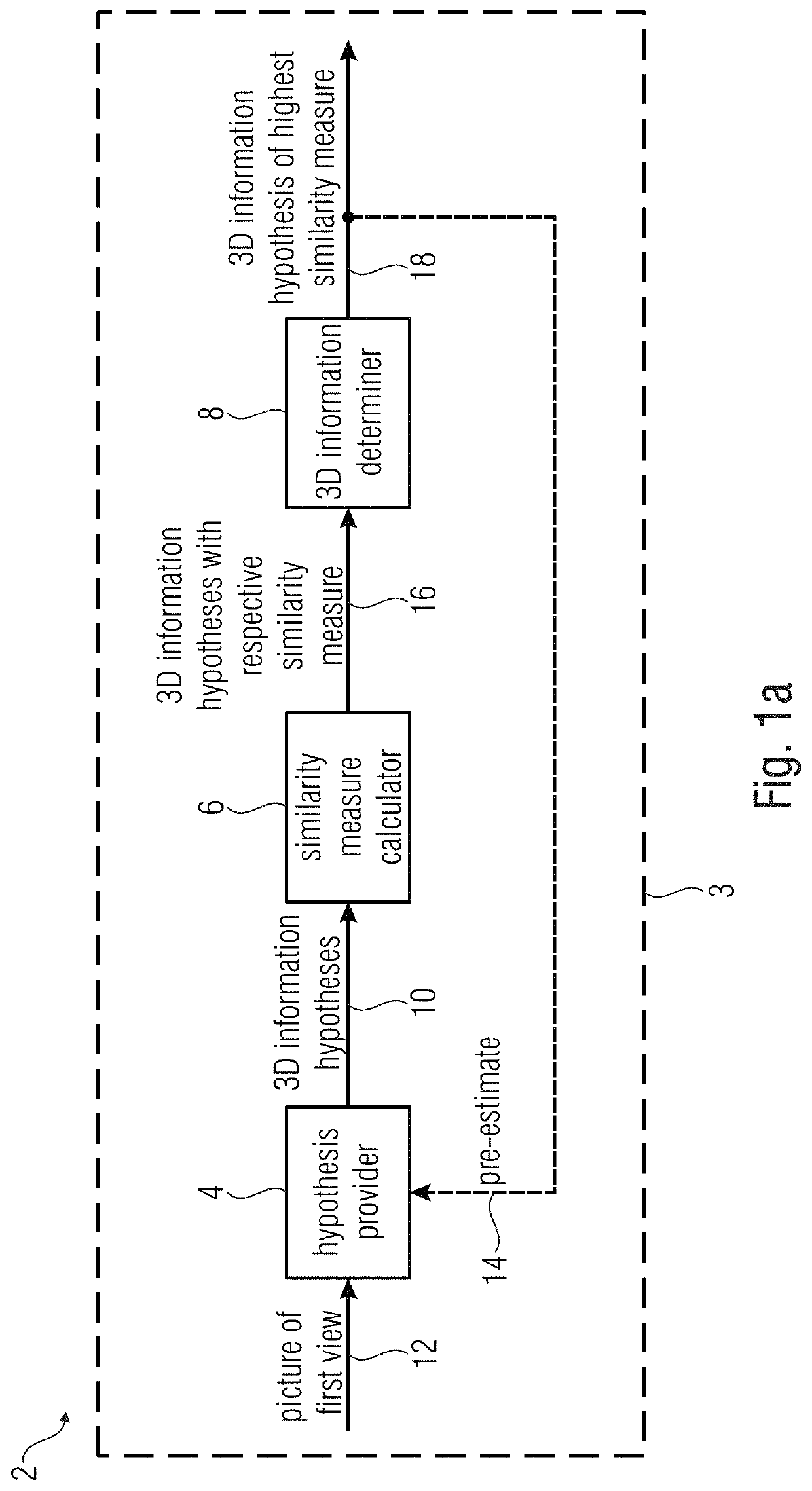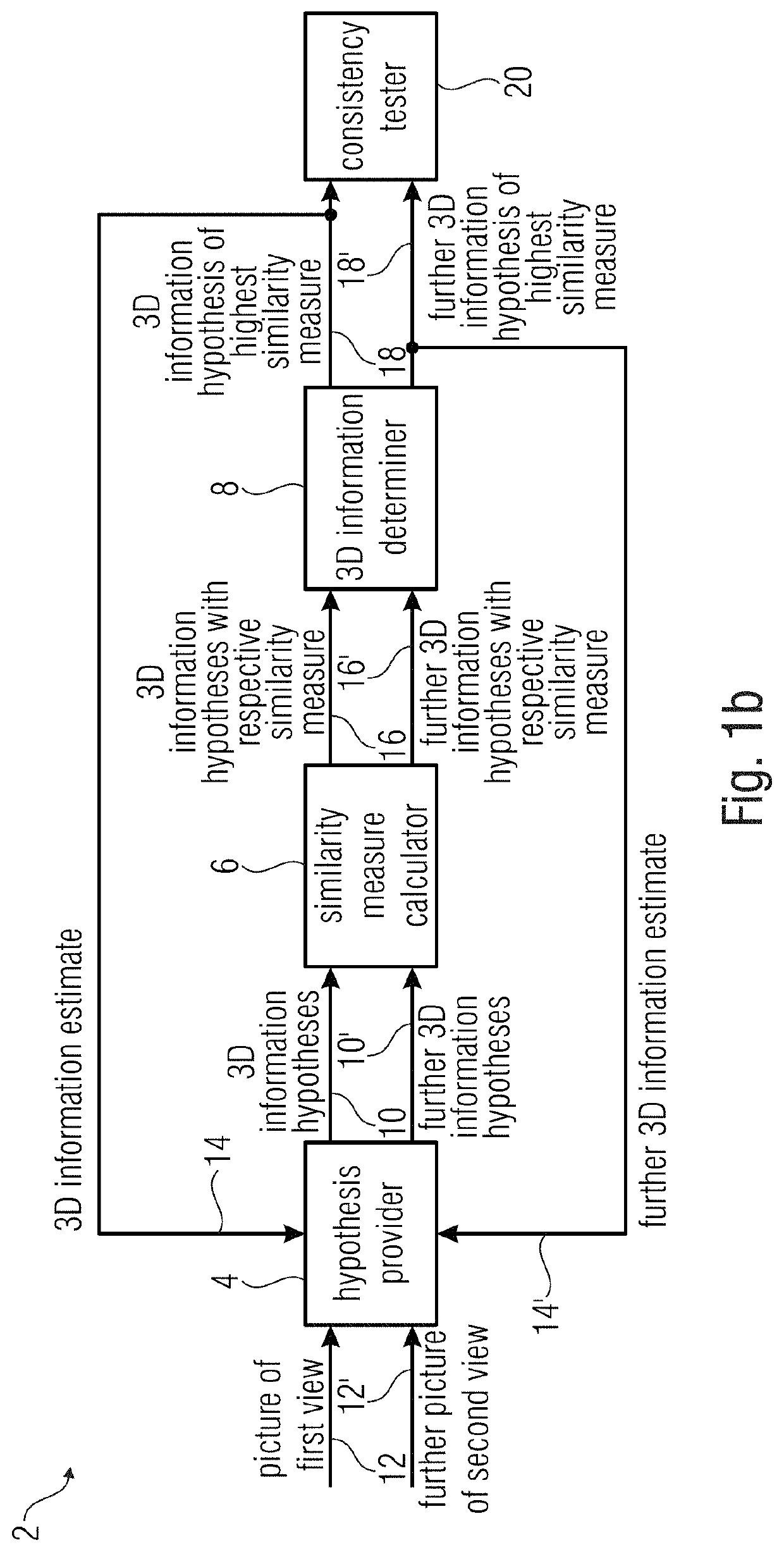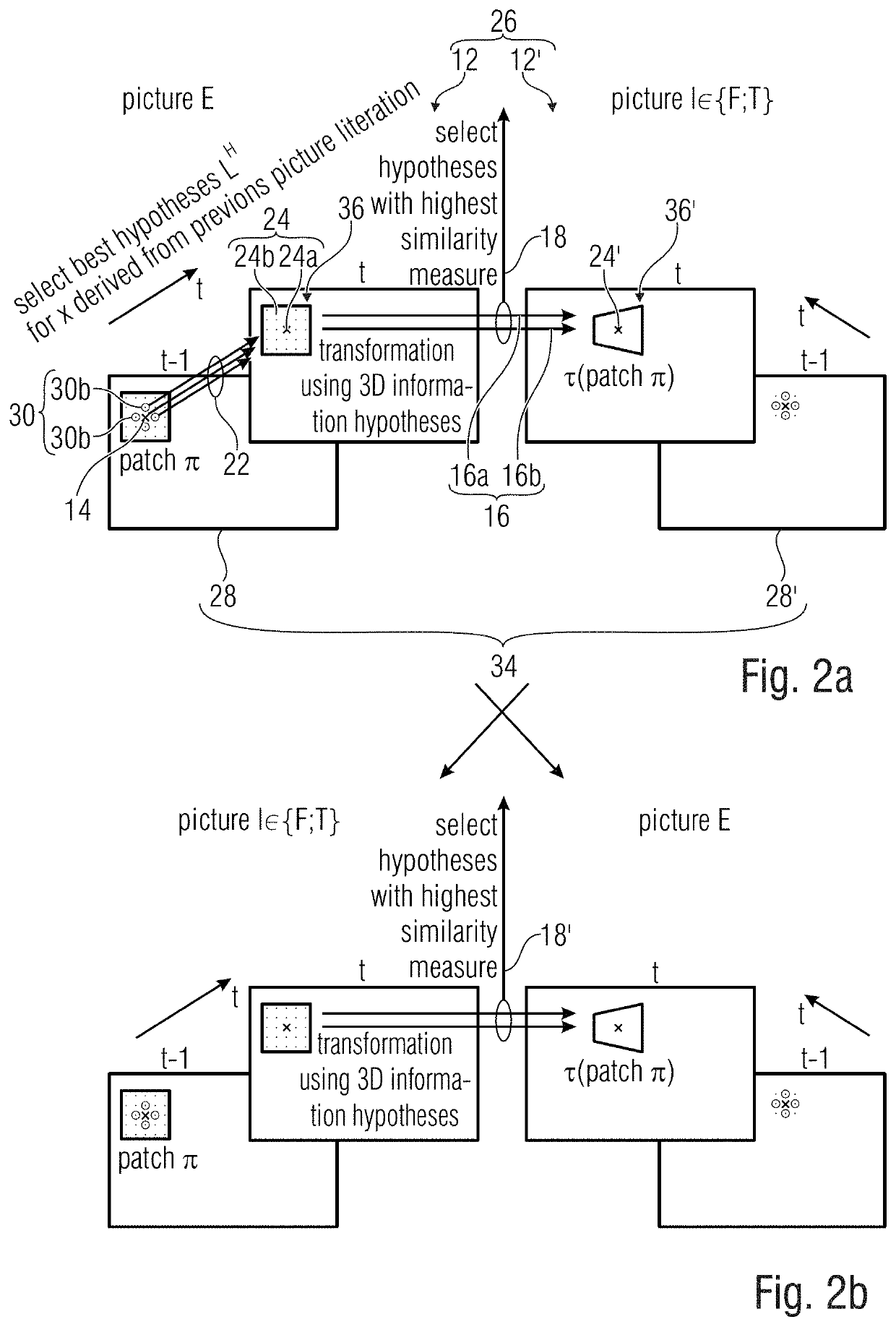Apparatus and method for performing 3D estimation based on locally determined 3D information hypotheses
a technology of local determination and estimation method, applied in the field of appratus and method for performing 3d estimation based on local determination 3d information hypotheses, can solve the problems of not parallelizing the traversal of the meander wise image, the computationally most expensive variant with more than 1000 seconds processing time for 0.3 megapixels, and the inability to perform all the described approaches in parallel, so as to improve the convergence properties and reduce the effect of artefacts
- Summary
- Abstract
- Description
- Claims
- Application Information
AI Technical Summary
Benefits of technology
Problems solved by technology
Method used
Image
Examples
Embodiment Construction
[0039]In the following, embodiments of the invention will be described in further detail. Elements shown in the respective figures having the same or a similar functionality will have associated therewith the same reference signs.
[0040]In contrast to previous work [44] on prior constraint patch sweeping, the main idea of the proposed algorithm is to generate prior information in the course of the sweeping procedure instead of an external prior injection. Here, the target is to replace the Hybrid Recursive Matching (HRM) prior by an integrated approach in order to eliminate the drawbacks of a workload distribution between CPU an GPU. Regarding the HRM prior for video communication from a very practical side, because of the workload distribution between CPU and GPU the downside of this procedure is an inherent latency overhead caused by processing the multi-view input first on CPU, store the result to main memory and then upload all data to GPU. In case of HRM prior there is an additi...
PUM
 Login to View More
Login to View More Abstract
Description
Claims
Application Information
 Login to View More
Login to View More - R&D
- Intellectual Property
- Life Sciences
- Materials
- Tech Scout
- Unparalleled Data Quality
- Higher Quality Content
- 60% Fewer Hallucinations
Browse by: Latest US Patents, China's latest patents, Technical Efficacy Thesaurus, Application Domain, Technology Topic, Popular Technical Reports.
© 2025 PatSnap. All rights reserved.Legal|Privacy policy|Modern Slavery Act Transparency Statement|Sitemap|About US| Contact US: help@patsnap.com



